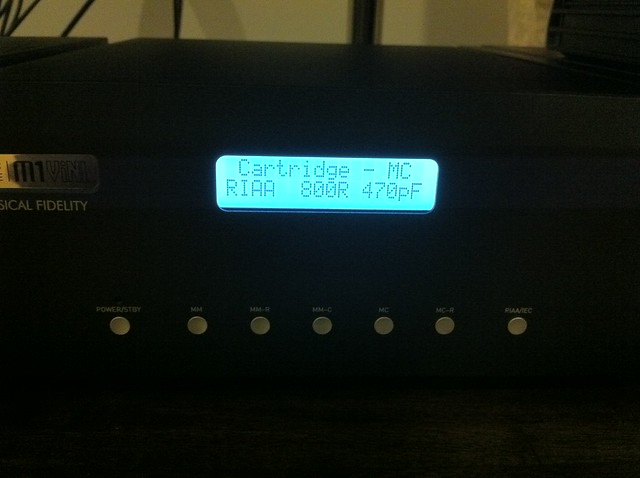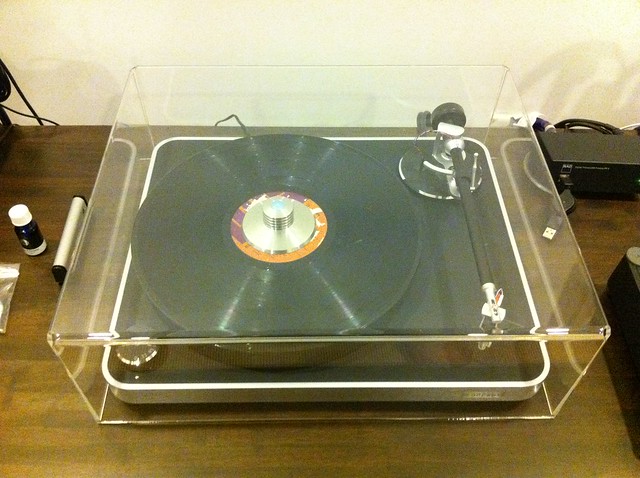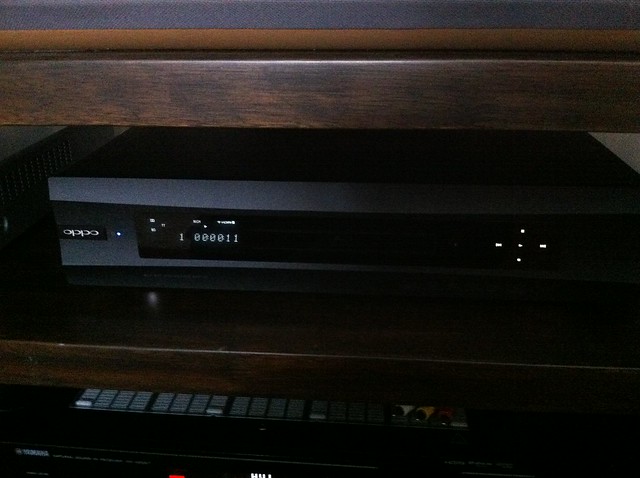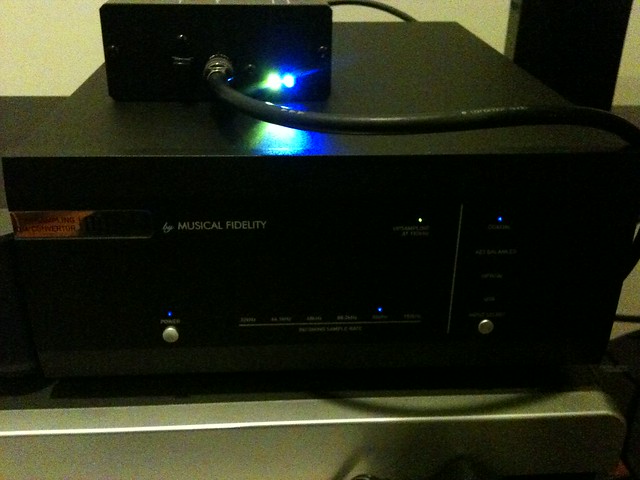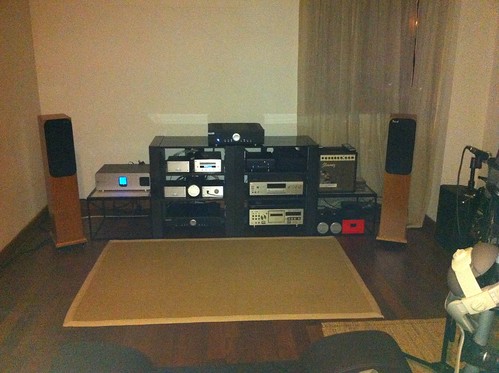1st Write Up: 5th Nov 2011
I have been contemplating to write about this for quite sometime now. Finally today had the courage to start the write up. It took me about an hour just to come up with the thread title.
The reason I had the courage today is because I have been receiving quite a few PMs asking me about the basic CAS setup. So I hope to share what my understanding is on this matter.
I chose the title CD-Less instead of CAS because it covers the very essence of the different set up using computer which is putting away the usage of CDs.
DISCLAIMER: This is based on MY understanding and experience in setting up such system. Its neither right nor wrong.
BASIC Definition
CAS (Computer Audio System) - Music files (eg WAV, MP3, FLAC) played by a music software (eg iTunes, Winamp) on a PC/laptop. PC/laptop here refers to the physical unit of a computer, running on Windows or Mac or Linux, equipped with other softwares like INternet Explorer, Micorsoft Word etc and also serve other purpose then playing music. To play music, this unit must be physically ON.
DAS (Digital Audio System) - Music files (eg WAV, FLAC, MP3) played by a media player. Media player refers to a physical unit that its ultimate purpose is just to play music (eg MF CLiC, Bryston BDP1, SB Touch, Olive, Naim Uniti, iPod, iPad). The media player may also still be running on an operating system such as Linux, Mac etc. The music files can be stored on a NAS (Network Access Storage), thumbdrive, external hard disk etc. To play the music, NO PC/laptop is required.
What are the BASIC components?
Given that one would already have an amplifier and a pair of speakers, they can embark into either of these options.
CAS:
1. PC/laptop/Mac equipped with sound card
2. Softwares eg iTunes, Winamp
3. Music files stored on the PC/laptop or external hard disc
DAS
1. Storage device eg external hard disk, NAS
2. Music files stored on the storage device
3. Media player eg MF CLiC, Bryston BDP1, SB Touch etc
BASIC Connection
CAS: 2 options available
1. Using an interconnect with 3.5 mm jack on one end and a pair of RCA stereo on the other hand, connect the 3.5 mm jack to the headphone output on the laptop and the RCA onto the amplifier
2. If your amp has a USB input, use a A-B USB cable. Connect the A side to the laptop and B side into the amp.
NOTE: The PC/laptop needs to be ON in order for you to play music.
DAS: 3 options available, depending on the input available on your chosen media player and storage method. Using MF CLiC as an example here.
1. Wired or wireless network. Connect your NAS using etehrnet cable into your home wifi router. For wired option, use another ethernet cable from your wifi router into the media player.For wireless, follow the instruction of the media player to connect to the wifi router. From the media player, use a pair of RCA interconnect and connect to your amp.
2. Direct USB connection from extenral hard disk/thumb drive. Use standrd USB cable. From the media player, use a pair of RCA interconnect and connect to your amp.
3. Direct USB connection to iPod/iPad. Use the standard Apple cable supplied with your iPod/iPad. From the media player, use a pair of RCA interconnect and connect to your amp.
Add ons
CAS:
1. Dedicated DAC inbetween the PC/laptop and the amp.
- you can use an optical digital cable to connect from your headphone output into your chosen DAC optical input. This is usually limit the data transmission to 48 kHz. At least I know it works for Mac.
-if your chosen DAC has an asynchronous USB input, use an A/B USB cable to connect your PC/laptop to the DAC.
2. Tube buffer inbetween the PC/laptop and the amp
- a unit like MF 10D tube buffer will usually add some warmth to your system. Using an interconnect with 3.5 mm jack on one end and a pair of RCA stereo on the other hand, connect the 3.5 mm jack to the headphone output on the laptop and the RCA onto the tube buffer.
For all options above, use a pair of RCA interconnect to connect the DAC or tube buffer to your amp.
Where Do You Get the Music Files?
1. Purchase the files directly over the internet and store it onto your chose CAS/DAS storage device
2. Rip your existing CDs into your chosen music file format. Eg: iTunes
3. The best way - pinjam from your kawan
So, there you go, the very basic of CD-less system. I started of using CAS but can no longer tolerate having my laptop crashing every now and then so I have moved to DAS with the following compnents:
1. 2 TB Western Digital NAS connected to Unifi Wifi Router
2. MF CliC connected to wifi router using ethernet cable and via homeplugs.
----------------------------------------------------------------------------------------
2nd Write Up: 7th Nov 2011
Streaming Convenience - More Add Ons
So, you have want music in every corner of your house? It used to be very expensive to do this as you have to run speaker wires through walls or over the ceiling to the next room. Plus your amp most probably can only run 2 pair of speakers and you have 10 rooms to fill it up with music.
Lo and behold. No more headaches wallet complaining to do this.
Currently, you have 2 options to stream music all over your house. The following is from the cheapest to the more upmarket ones
1. Wireless
1.1 Wireless via Wifi
Airport Express:
- Works with both Mac and Windows.
- Need to have your laptop/PC ON, so this is under CAS
- Need iTunes running for this to work
- If you have an iPad/iPod Touch/iPhone, you can select the songs you want to play on your laptop/PC from either one of these gadgets.
- The Airport Express (AE) basically connects wirelessly to your existing wifi router where music from your PC will be streamed to the wifi router then to the Airport Express.
- You plug in this AE to a electrical plug outlet in the room you want it to stream songs to, connect and active/powered speakers to this AE, select a song from your iTunes, and voila, you will be listening to music in another room as well. (OK, there is some basic setting you have to do on your PC for the first time usage)
- You can have as many as 16 (if I am not mistaken) of these AE in your house where each of them can be stream the SAME SONG at the same time.
- Each AE can be named (eg lounge AE, kitchen AE) and the volume can be individually controlled from iTunes or your iPad/iPod Touch/iPhone
- Disadvantage - you must have a good, stable and powerful wifi router. Weak wifi signal will cause signal to drop and you will not enjoy the music.
- Main advantage - cheapest available wireless option, can act as wifi router on its own as well and you can also connect to a printer to create a network printer for multiple PC/laptop wireless printing.
-Now, you can also stream directly from your iPad, iPod Touch and iPhone to these AE. BUt how it works is still the same as above: iphone -> home wifi router -> AE
- Want to make it sound better? These AE allow digital optical connection to a DAC.
- RRP: you can find them at RM330 brand new from online Apple store
Second choice would be Squeezebox Touch: However I do not have any experience dealing with this.
Thirdly which is the most expensive is the Sonos wireless system.
Similar concept as AE but does not depend on your home wifi router. It has its own dedicated wifi router, hence does not depend on your home wifi router signal. Less issue on signal dropping.
Depending on your choice of Sonos, some of the units comes with built in amp and speakers. So, thats all you need.
1.2 Wireless via Bluetooth (BT)
As the quality of music streamed via WiFi is as good as the performance of your router, some people wants a more reliable network for streaming. Bluetooth is another technology that has been adapted in music streaming.
The cheapest and simplest unit is the QED uPlay, retailing at about RM280 if I recall correctly. Its plug and play. Its also known as 'The Puck' as it is shaped as an ice hockey puck. It comes with 2 options to connect to your amplifier, either with stereo RCA or 3.5mm jack. It uses Apt-X technology for the BT signal.
The second unit is a more gungho unit by BRIK Audio. I have done a review on this under the Equipment Discussion forum. The unit is called BT Stage. All you need to do is to connect a pair of stereo interconnect from this unit to the amp, and you are done.
For both units, pairing it with any of your BT enabled media player (iPod, iPad, nokia phones, BB phones etc) is simple. Just switch on your BT on your device, search for BT Audio, key in 0000 as the code and voila, you are connected.
2. Wired
Music can also be streamed via ethernet cable, but again, do you want to run a long ethernet cable to other rooms? Very messy.
So, once you have chosen your streamer device eg Sonos, MF CLiC (or even if you have an Oppo BD95 EU blu ray player), you can purchase a pair of homeplug devices to avoid messy ethernet cabling. Make sure your streamer has an ethernet input.
Homeplugs basically use your existing electrical cabling in your house, to send internet data from one point to another. So, basically it is wired.
You take one unit of homeplug. Plug it near your wifi router. Connect a short ethernet cable from you wifi router into this homeplug. Then, take the second homeplug and plug it where you want to stream music to. Connect another short ethernet cable from this second home plug into your streamer.
Thats it. Both of the homeplug units will search for each other via the electrical cable in your home and send data to each other.
NOTE: Both of the plug outlets that you use, must be in the same phase of your home electrical cabling. No issue for homes with single phase wiring. But for 3 phase wiring, have to make sure the plug outlets are in the same phase.
3rd Write Up: 9th Nov 2011
My Set Up
1. First CAS set up (now retired
Hardware: ASUS - Windows based laptop
Software: iTunes, Foobar
Streamer: Airport Express in Kitchen, Lounge and HiFi Room
DAC: Musical Fidelity X-DAC connected to AE in HiFi Room
2. Second CAS Set Up (now retired
Hardware: Mac PC
Software: iTunes
Streamer: Airport Express in Kitchen, Lounge and HiFi Room
DAC: ARCAM rDAC connected to Mac via A-USB
3. Now moved to DAS
Hardware: Western Digital 2 TB NAS (also used to stream movies via Oppo BD player)
Software: NIL
Streamer and DAC: Musical Fidelity CLiC
4th Write Up: 15th November 2011
Quoted from The Absolute Sound magazine (2012 High End Audio Buyer's Guide)
Computer Audio is simply put as the playback of digital music files from a computer or hard drive based storage device.

